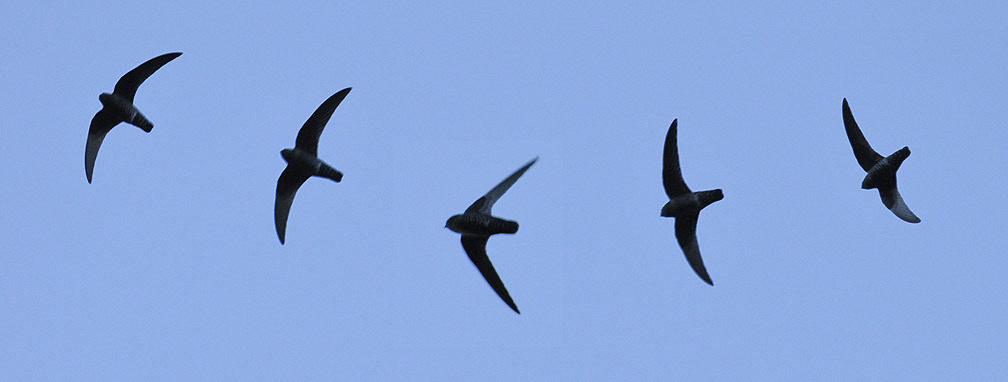Swift Travels

Last fall I posted about the project to put geolocators on Black Swifts in an effort to determine, for the first time, where the species spends the months from October to May. I just got exciting news from Rocky Mountain Bird Observatory’s Jason Beason: on Wednesday night, the team succeeded in recapturing one of the birds wearing a geolocator!
Of course, this success will take a while to bear fruit. First Jason has to hang the geolocator outside his house for a week so that it can be calibrated according to the sunrise and sunset times at a known location. (All the geolocators were also calibrated in this way prior to deployment.) Then, assuming that all has gone well with the device over a year of riding swiftback, the team can download the data and begin the complex task of determining the latitude and longitude of the device every day for the past year based on sunrise and sunset times. Then, and only then, will the team be able to generate a map of the bird’s travels.
Only four geolocators were placed on swifts last year: three at a cave in the Flat Tops Wilderness and one at a nest at Box Canyon Falls in Ouray. The geolocator recovered on Wednesday came from the Flat Tops cave. To have recaptured one of only three marked birds there is a tremendous success, but a calculated one, since Black Swifts have tremendously high site fidelity from year to year. Jason and his collaborators (Kim Potter, Carolyn Gunn, Chuck Reichert, and Todd Patrick) will revisit the cave next month to try to snag one or both of the remaining geolocators at that site, and they will be attempting to recapture the Box Canyon bird tomorrow–it is believed to be attending the same nest as last year.
Thanks and congratulations to the intrepid explorers who are on the verge of solving one of the biggest remaining mysteries of North American bird migration!
One thought on “Swift Travels”
Update: a second geolocator was recovered from the Box Canyon bird on 14 August, and a third was recovered from the Flat Tops cave on 23 August! That’s a 75% recapture rate! Hopefully by later this year we will know more about where these three birds spent last winter.
Comments are closed.